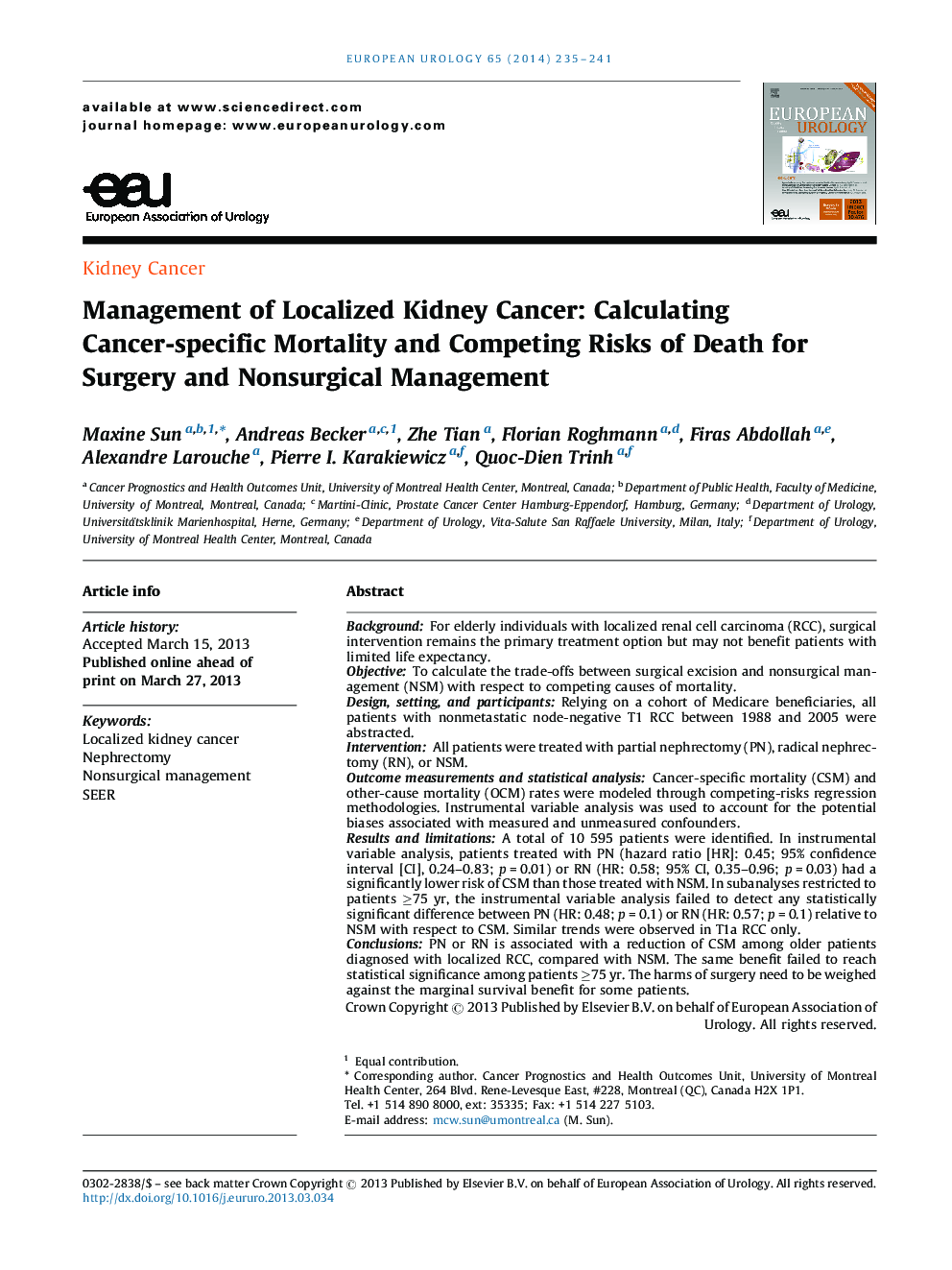| Article ID | Journal | Published Year | Pages | File Type |
|---|---|---|---|---|
| 3925049 | European Urology | 2014 | 7 Pages |
BackgroundFor elderly individuals with localized renal cell carcinoma (RCC), surgical intervention remains the primary treatment option but may not benefit patients with limited life expectancy.ObjectiveTo calculate the trade-offs between surgical excision and nonsurgical management (NSM) with respect to competing causes of mortality.Design, setting, and participantsRelying on a cohort of Medicare beneficiaries, all patients with nonmetastatic node-negative T1 RCC between 1988 and 2005 were abstracted.InterventionAll patients were treated with partial nephrectomy (PN), radical nephrectomy (RN), or NSM.Outcome measurements and statistical analysisCancer-specific mortality (CSM) and other-cause mortality (OCM) rates were modeled through competing-risks regression methodologies. Instrumental variable analysis was used to account for the potential biases associated with measured and unmeasured confounders.Results and limitationsA total of 10 595 patients were identified. In instrumental variable analysis, patients treated with PN (hazard ratio [HR]: 0.45; 95% confidence interval [CI], 0.24–0.83; p = 0.01) or RN (HR: 0.58; 95% CI, 0.35–0.96; p = 0.03) had a significantly lower risk of CSM than those treated with NSM. In subanalyses restricted to patients ≥75 yr, the instrumental variable analysis failed to detect any statistically significant difference between PN (HR: 0.48; p = 0.1) or RN (HR: 0.57; p = 0.1) relative to NSM with respect to CSM. Similar trends were observed in T1a RCC only.ConclusionsPN or RN is associated with a reduction of CSM among older patients diagnosed with localized RCC, compared with NSM. The same benefit failed to reach statistical significance among patients ≥75 yr. The harms of surgery need to be weighed against the marginal survival benefit for some patients.
